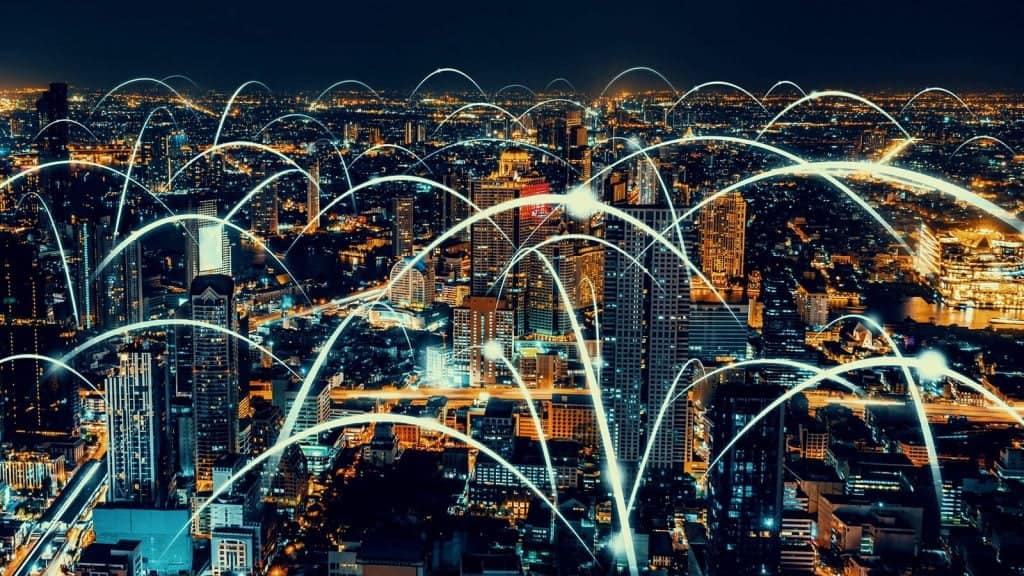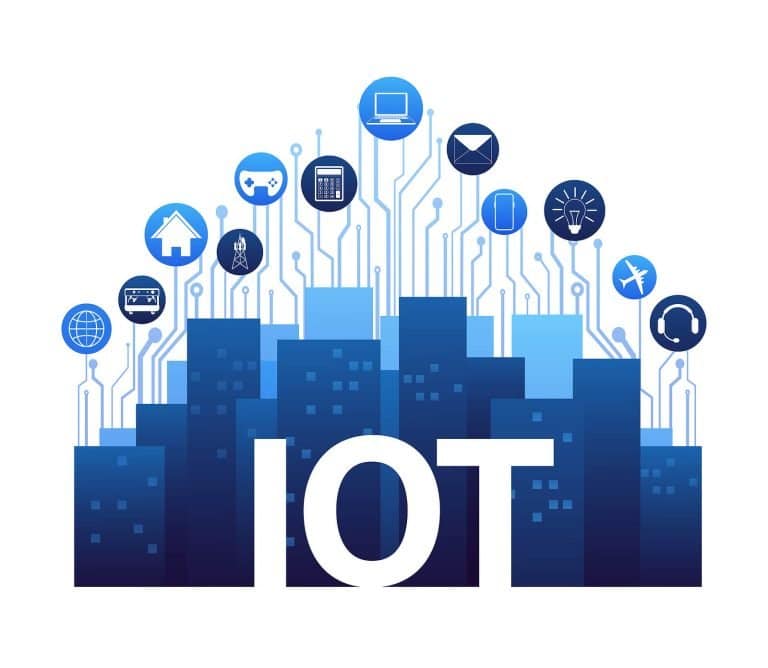Thanks to developments in AI and IoT, cities are always becoming ” smarter. ” Technology is making everything from waste management to water system control to the air we breathe cleaner and more manageable in ways we never previously thought possible.
Table of Contents
ToggleThe concept of the IoT has existed since 1999, of course, but recent advancements in AI have enabled it to function better, more efficiently, and in a more significant number of diverse applications throughout urban areas. Let’s look at several examples of how these AI and IoT in smart cities are changing the lives of city dwellers globally.
AI and IoT – Smart Meters and Water Usage
Smart meters allow IoT sensors to track water usage. This, in turn, allows city administrators to predict energy consumption patterns with much greater accuracy and ultimately save money.
With the help of AI, people can monitor water usage in real-time and assess things like potential water damage with greater accuracy. In addition, algorithms analyze water samples so that cities can find contaminants and eventually make their water safer. To accomplish this, utility companies are using a variety of technological developments to better understand and predict water usage.
Thanks to AI algorithms that combine with accompanying technologies, IoT sensors across whole infrastructure systems provide additional information about water usage. One technology that utility companies use to gather information is Geographical Information Systems (GIS). This provides the companies with precise geographical information about where processes take place rather than simply what the system reads overall.
In applying their algorithms to IoT sensors equipped with GIS sensors, AI-driven systems can detect leaks and identify other types of problems, such as contaminants and other water-quality issues, faster and more accurately. As a result, companies can adjust system requirements with far greater precision, streamline their processes, and save money. When necessary, they can shut off water supplies where they are not needed, thereby reducing energy consumption.
Water systems are an example of cities utilizing AI-powered network optimization throughout urban areas. These types of networks will soon become more common, and more cities will adopt them for various functions.
AI models empower water management systems to analyze water consumption patterns, detect leaks, and optimize distribution networks. Similarly, telecommunications companies leverage AI models to enhance communication network efficiency and performance. Through AI-powered network optimization, they dynamically allocate resources and improve signal quality, ensuring seamless connectivity.
AI and IoT in Waste Management
Another area where cities are combining IoT with AI is waste management. Cities are installing waste receptacles equipped with IoT sensors to optimize waste collection. Sensors can detect when bins overflow, and cities can target problematic areas by making receptacles more efficient. These “smart” trash receptacles in urban areas will reach 2.4 million by 2025.
AI assists in the management process in different ways. Once receptacles fill with trash, AI algorithms help sort recycling into types, which is something that people used to do primarily by hand. Experts believe that the use of AI in identifying and sorting waste has a very high accuracy rate, up to 99.95% in some cases.
AI is also proving useful in particular areas of waste management, for example, in restaurants, and during city-wide festivals. By monitoring waste buildup in these excessively heavy areas, AI algorithms can adjust to predict receptacle size in the future. An additional advantage is that obtaining a better understanding of disposal needs can help city officials better plan garbage truck patterns and pick-up times.
AI and IoT in Air Quality Control
Air quality is also a significant concern in urban areas. By installing sensors in different parts of a city, city officials can obtain air quality readings in many other distinct places as they wish. People can obtain real-time information about air quality using AI-driven technology and take appropriate actions accordingly.
By detecting severe problems, such as gas leaks, officials can quickly solve emerging problems before too much damage is done.
Additional benefits of using AI in smart sensors include making better long-term predictions about air quality. In learning precisely the patterns in different neighborhoods, at different times of day, etc., administrators can adjust policies and relay necessary information to other municipal agencies accordingly. If air quality levels become dangerously low, administrators can warn the public promptly and thereby help people avoid particularly bad quality air.
Traffic Control Mechanisms
In enabling more efficient, streamlined traffic control mechanisms, transportation management systems have been applying sensors on roads to identify and manage the incidence of accidents, traffic congestion, and other types of obstacles, as well as related factors affecting traffic.
These sensors help to communicate information related to speed, direction, and the time it takes to travel specific distances. And in addition to using sensors on roads, they can also be used on any moving object. By collecting all the information provided by moving and still objects in a given area, officials can make faster, more informed decisions regarding traffic control.
Thanks to the combination of “computer vision” that sensors allow city administrators to have – enabling people to see fine details of traffic scenes – along with AI algorithms that can detect minor situational changes instantaneously (including everything from walking patterns to light changes), officials can now take many subtle measures with regard to traffic control. These include reducing risks to pedestrians as well as traffic, as well as larger-scale functions such as enabling traffic lights to function more effectively.
Some Cities Are Developing Faster Than Others
Some areas are ahead of the curve in terms of their use of AI and the IoT. If you ever wonder why Dubai is rich, for example, one of the reasons is that it has always been at the forefront of these kinds of technological developments.
An example of how Dubai has excelled in smart technology is in its “smart ball” system, which is used to track and analyze water usage using the smart meter technology described above. Thanks to this system, Dubai was able to save AED 5.2 million (1.4 million USD) from April 2021 until the end of 2022. Similarly, Dubai also excels in areas such as smart air control, smart waste management, and things like smart street lighting and transportation.
Conclusion
Cities like Dubai, Barcelona, Singapore, and Amsterdam, have indeed been trendsetters in smart urban living. But the technologies of building AI-driven smart systems are becoming more widespread all the time. Soon, many urban areas will start applying smart, AI-driven systems to various aspects of their municipal systems, and citizens will become more involved in the process. Although these technologies are not without the ability to falter, they hold enough promise that many cities are now looking to become smart.
FAQ
A: AI and IoT technologies create interconnected networks, optimizing city infrastructure, enhancing services, and improving urban living for residents.
A: AI analyzes vast data from IoT sensors, making data-driven decisions, enabling predictive maintenance, traffic management, and efficient resource allocation.
A: Absolutely! IoT devices monitor energy usage, waste management, and water consumption, enabling cities to implement eco-friendly practices and reduce environmental impact.
A: AI algorithms optimize energy distribution, managing demand and supply in real-time, leading to reduced energy wastage and cost savings.
A: Improved safety, efficient public transportation, better healthcare services, and enhanced urban planning are benefits that AI and IoT bring to citizens in smart cities.




